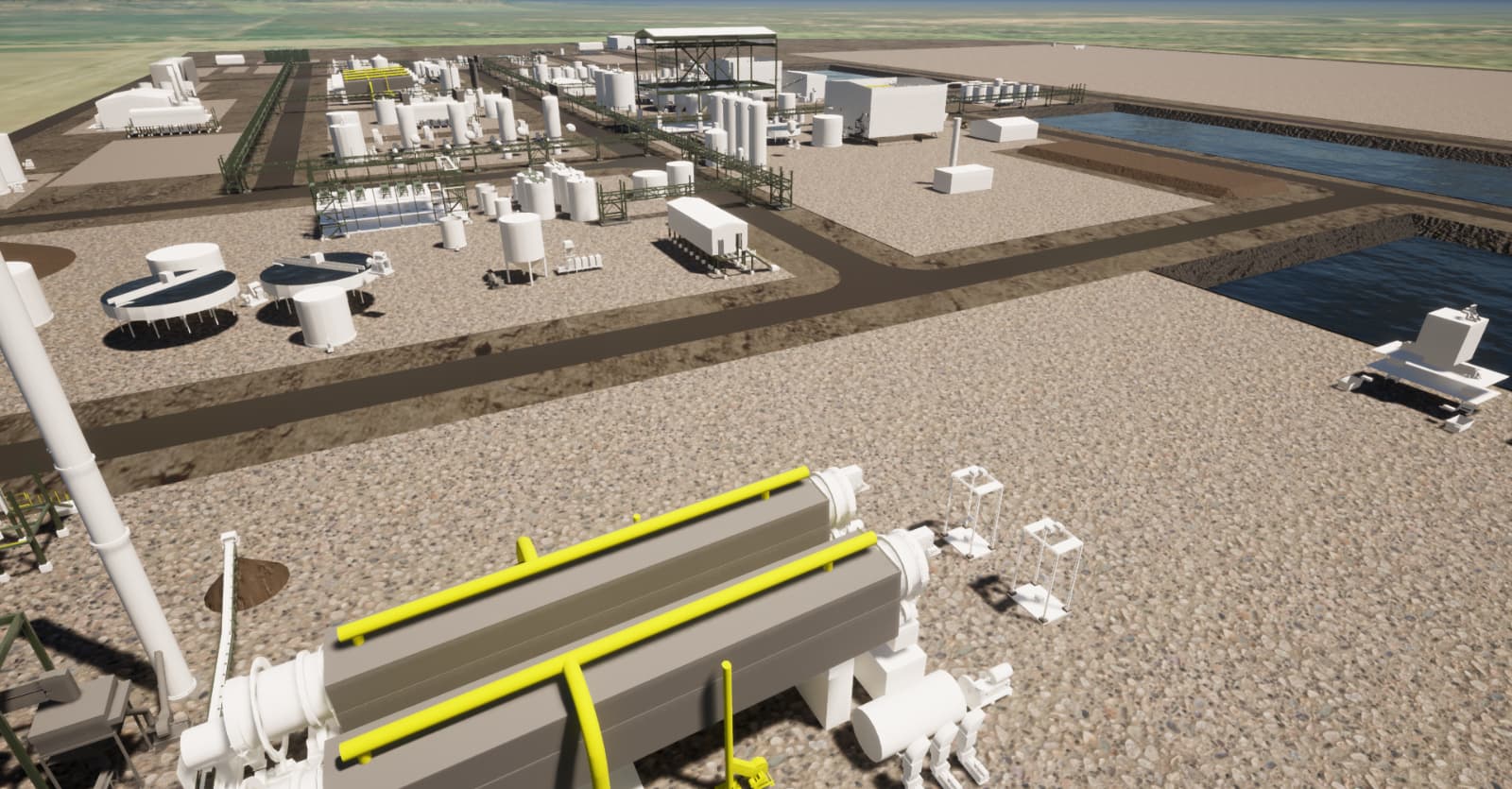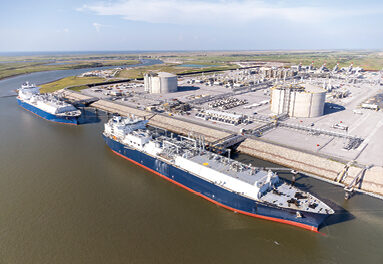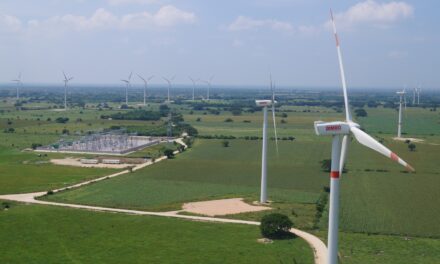Critical Milestones on Critical Mineral Projects |

Queensland Pacific Metals’ Townsville Energy Chemical Hub (TECH) project, which will build nickel processing capacity in northern Australia, is one of some two dozen critical mineral projects around the world supported by the 13-nation Minerals Security Partnership.
Rendering courtesy of Queensland Treasury
Clean energy goals require the sometimes less-than-clean manufacture of the products charged with achieving those goals, from solar cells and panels to wind turbine blades and nacelles to all the EV- and semiconductor-related products that require critical minerals.
Thus the critical minerals supply chain is under its own high degree of scrutiny.
Early this week, the partners of the Minerals Security Partnership (MSP) held a principals’ meeting in Toronto during the Prospectors and Developers Association of Canada annual convention, the largest mining event in the world. The MSP — a collaboration of 13 countries and the EU to catalyze public and private investment in responsible critical minerals supply chains globally — “aims to accelerate the development of diverse and sustainable critical minerals supply chains through working with host governments and industry to facilitate targeted financial and diplomatic support for strategic projects along the value chain,” the coalition said in a joint statement.
Exactly where those projects are and what they’re up to can be a challenge to ascertain, but they appear to number around two dozen from locations as various as Australia, Czechia and Mozambique, with offtake agreements connected to plants in such locations as Quebec and Louisiana.
“Unfortunately, at this time we can’t share anything beyond the information in the release,” U.S. State Department spokesperson Gabriel Sandler told me this morning by email.
The joint statement issued on Monday notes 23 projects, but the details shared about them seem to point to a larger figure:
“Across the 23 MSP projects:
- 16 projects involve upstream mining and mineral extraction, seven involve midstream processing, and seven involve recycling and recovery.
- The projects cover cobalt, copper, gallium, germanium, graphite, lithium, manganese, nickel, and rare earth elements.
- Six project sites in the Americas, five project sites in Europe, 13 project sites in Africa, three project sites in the Asia-Pacific region.
In this statement and an earlier statement from October, the MSP describes notable milestones achieved for some of the projects, including:
- EcoGraf Epanko Graphite Project: “Australian-based EcoGraf has authorized German-based KfW IPEX-Bank to arrange a senior debt facility of up to U$105 million for the development of the Epanko Graphite Project in Tanzania,” expected to produce 73,000 tons per year of graphite. “EcoGraf is building a vertically integrated battery anode materials business to produce high-purity graphite products for the lithium-ion battery and advanced manufacturing markets. EcoGraf’s commitment to high ESG standards, in compliance with the Equator Principles, has been a key factor in securing this financing.”
- Gecamines-JOGMEC MOU: “This February at Mining Indaba in Cape Town, South Africa, the United States, as Chair of the MSP, and MSP partners announced the signing of a Memorandum of Understanding (MOU) between LA GENERALE DES CARRIERES ET DES MINES (GECAMINES) and the Japan Organization for Metals and Energy Security (JOGMEC). This milestone collaboration, forged through dialogue among MSP partners, creates a framework for coordination in mineral exploration, production, and processing in alignment with our shared commitment to the Partnership for Global Infrastructure and Investment (PGI)’s development of the Lobito Corridor” connecting parts of the Democratic Republic of the Congo and Zambia to regional and global trade markets via the Port of Lobito in Angola.
- Chvaletice Manganese Project: This project will reprocess manganese from mine tailings in Czechia to produce high-purity electrolytic manganese metal needed for the battery supply chain. “Companies from MSP partner countries are developing offtake agreements for the material, including cathode active material (“CAM”) and the precursor product (“pCAM”) producers, battery makers and automobile manufacturers,” the MSP says. “The European Bank for Reconstruction and Development and the European Institute for Innovation and Technology (EIT) InnoEnergy are providing financial support. The EU and Canada are engaged on this project through the MSP and through their bilateral strategic partnership on raw materials. Euro Manganese is also preparing a feasibility study for a dissolution plant in Bécancour, Canada, to produce a high-purity electrolytic manganese sulphate monohydrate powder from high-purity manganese metal.”
- Queensland Pacific Metals (QPM): “QPM’s Townsville Energy Chemical Hub (TECH) project will build nickel processing capacity in northern Australia, diversifying the midstream of the supply chain for nickel, an essential mineral for electric vehicle batteries.” The project has received the equivalent of US$900 million in conditional debt commitments from financing agencies in Australia, Canada and Germany. “QPM has already secured offtake agreements for 100 percent of nickel and cobalt sales for the life of the project with partners including the United States’ General Motors, and the Republic of Korea’s LG Energy Solution and POSCO.” The Queensland Treasury has granted the AU$2 billion project Significant Investment Project status to support progress of the Townsville Energy Chemicals Hub (TECH) at the Lansdown Eco-Industrial Precinct in Townsville.
- Twigg Exploration and Mining: “The Board of Directors of the U.S. International Development Finance Corporation (DFC) approved a loan of up to US$150 million in financing to Twigg Exploration and Mining to fund investments in the company’s graphite mining and processing operation in Balama, Mozambique … This investment complements an investment by Twigg’s parent company, Syrah Resources, in the Vidalia graphite active anode material processing facility in Louisiana, which received a loan from the U.S. Department of Energy.”
- HyProMag: “HyProMag is commercializing rare earth magnet recycling using Hydrogen Processing of Magnet Scrap (HPMS) technology, developed at the University of Birmingham, UK, which can liberate and recycle magnets from end-of-life scrap. Having commissioned the UK’s first rare earth magnet recycling pilot plant at the University of Birmingham in 2022, alongside the UK’s only facility to make sintered rare earth magnets, HyProMag, together with the University of Birmingham, are developing a large-scale recycling plant at Tyseley Energy Park, Birmingham, with first production by the end of this year and supported with funding from UK Research and Innovation. Investment from UK-Canada listed Mkango Resources in 2020 has helped scale-up and catalyze international growth initiatives, including in Germany where HyProMag has established a sister company, HyProMag GmbH, and in the U.S. through a new Maginito-CoTec 50:50 joint venture company, with evaluation of other jurisdictions underway.” Now 100% owned by Maginito, HyProMag was founded in 2018 by the late Professor Emeritus Rex Harris, former head of the Magnetic Materials Group (MMG) within the School of Metallurgy and Materials at the University of Birmingham; Professor Allan Walton, current head of the MMG; and two Honorary Fellows, Dr. John Speight and Mr. David Kennedy, experts in the field of rare earth magnetic materials, alloys and hydrogen technology.
In addition to the above projects, the MSP says it is “continually assessing potential investment opportunities across all eligible markets that would support diversification of critical mineral supply chains and development of the associated infrastructure.” — Adam Bruns







